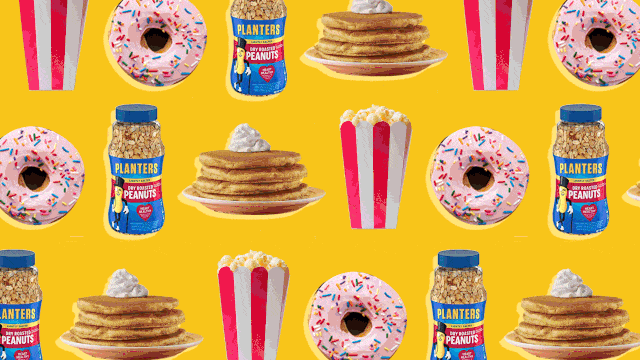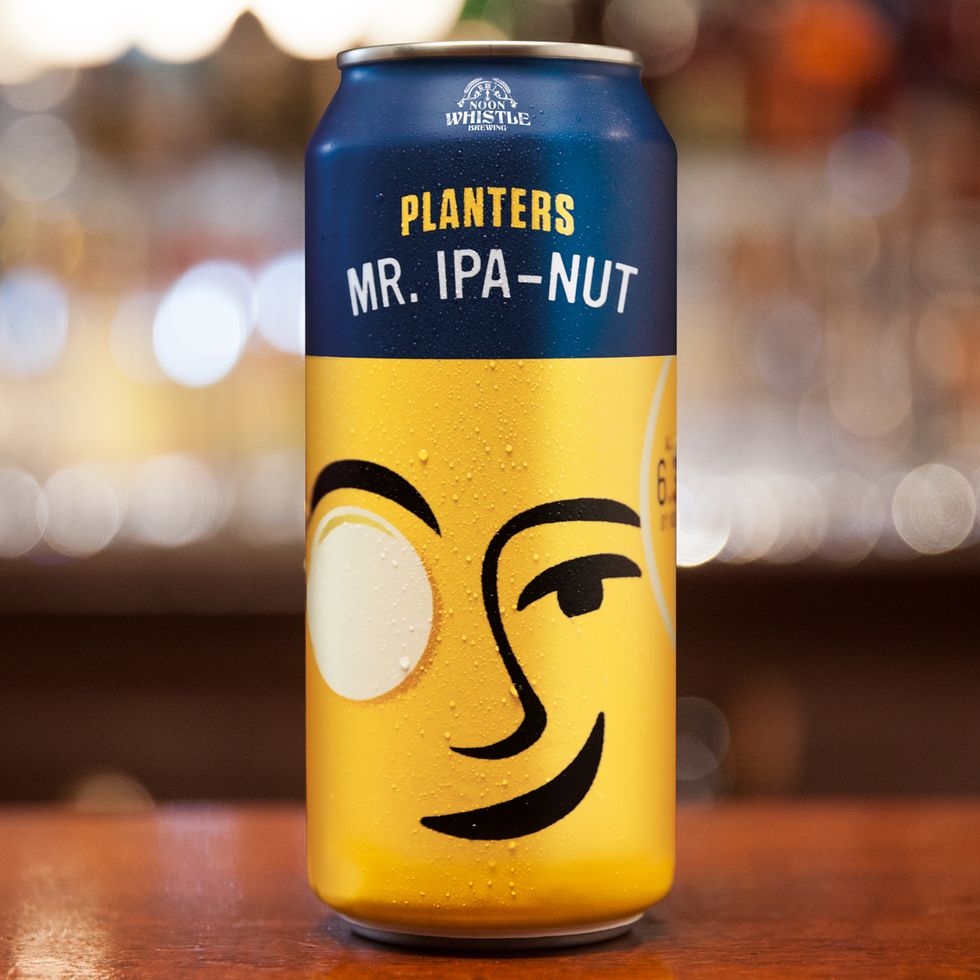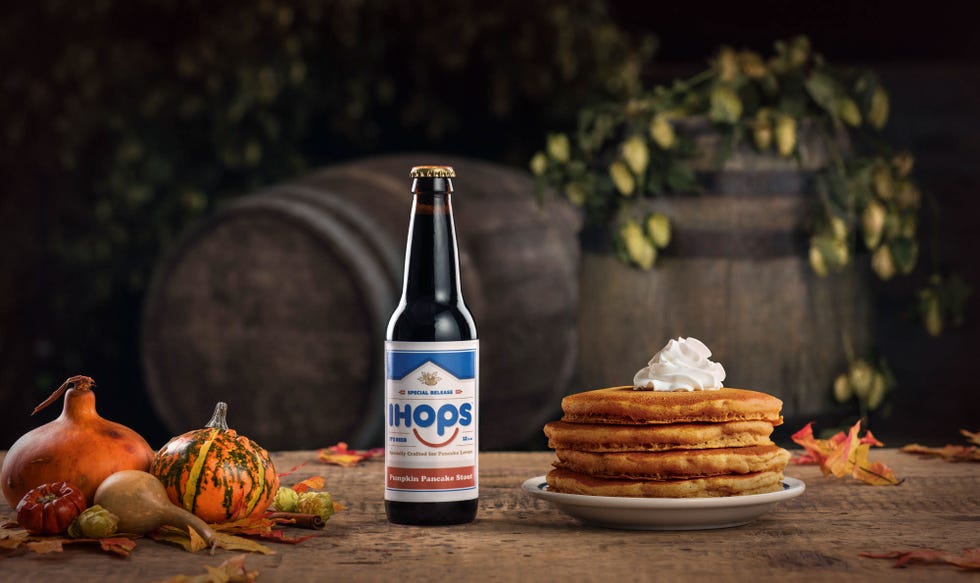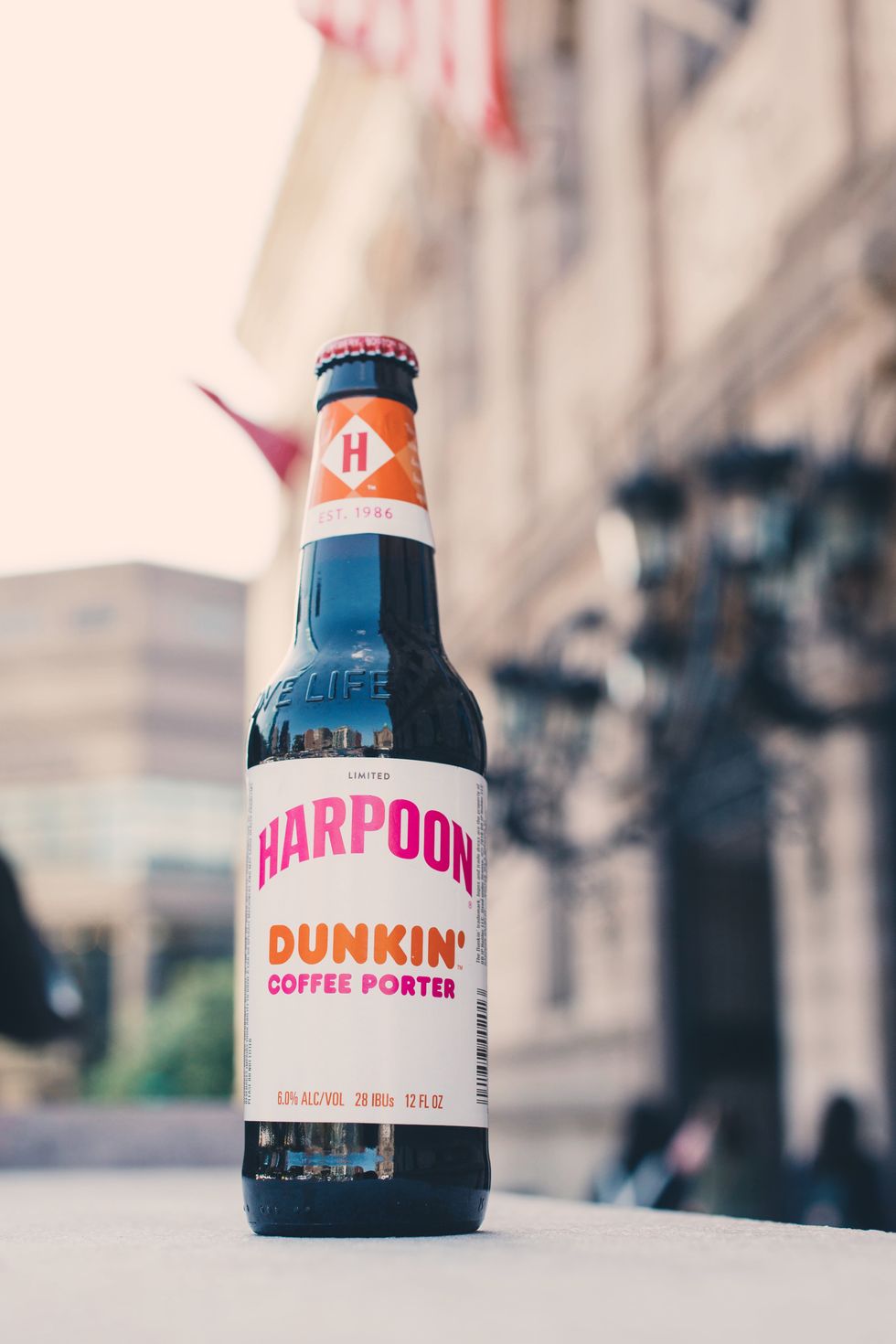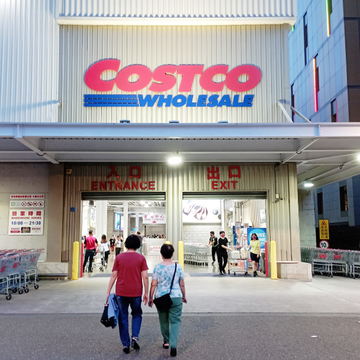The wave started with Blockbuster, back in September. The almost-defunct video store's swan song had nothing to do with movies, but rather beer: The last standing location collaborated with its Bend, OR, neighbor 10 Barrel Brewing on a black ale appropriately named The Last Blockbuster. Less than two weeks later, Dunkin’ Donuts released a coffee porter with fellow Massachusetts favorite, Harpoon Brewery. It was IHOP's turn next: The chain followed up the great IHOb debacle with IHOPS, a pumpkin pancake stout made with Keegan Ales. Then, in late October, Planters and Noon Whistle Brewing unveiled their IPA-Nut IPA. Four beers, in two short months, from four companies that all have one thing in common: They do not make beer. So, why the sudden rush to release these craft brew collaborations?
From the brands to the breweries, the sentiment seems to be unanimous that craft beer is simply too zeitgeisty to ignore. The potential to reach new customers and engage existing customers is huge.
"Beer brings people together, and I think a lot of non-beer businesses see the value of this intrinsic element of beer," says Shreyas Balakrishnan, the general manager of Elysian Brewing Company. Elysian brewed The Noise pale ale as a collaboration with the Seattle Seahawks this September. "Looking outside your 'bubble,' no matter what industry you're in, allows for growth, creativity, and pushing boundaries, and I think that's something everyone can get on board with."
That's an idea Kurt Fries, the chief creative officer of advertising agency McGarryBowen's Chicago branch who worked on the Planters beer initiative, seconds.
"We’re inserting ourselves in culture in a way that makes sense for both our brand and our customers."
"The trend around craft beer in general has been exploding over the last ten years. Why are we doing it? We're inserting ourselves in culture in a way that makes sense for both our brand and our customers."
So, what's the point of all this?
The trend is two-fold: A brand decides to release a beer, then picks a craft brewery to work with. Food and lifestyle expert and the brand strategist behind Lovely & Delicious Enterprises Chadwick Boyd points out that alcohol and non-alcohol brands are starting to merge, like Starbucks bringing beer and wine into certain locations. This bolsters the image of these businesses as being more of a lifestyle and their locations more like gathering places. He adds that craft beer, in particular, lines up well with how these brands want to market themselves.
"Brands are looking for ways to connect with millennials, and craft beer is a part of that...It's very much a current trend in that it's called 'craft' for a reason. It has a certain level of quality, of attention to detail, and flavor profile." Boyd sees more opportunity for brands to expand their reach and engage consumers with the kind of authenticity that a craft beer can bring, as long as that authenticity is, in fact, there; the beer has to be a quality offering.
The Last Blockbuster might have seemed like one giant publicity stunt, but Chris Cox, a co-founder of 10 Barrel Brewing, begs to differ. The idea was all 10 Barrel's, and Blockbuster helped with the execution. Marketing Director and Head Brewer of Keegan Ales Patrick Sylvester is also happy with the teamwork behind his brewery's beer for IHOP.
"The process was awesome. Essentially we started with a round-table discussion about flavors we wanted to convey. IHOP brought to the table their pumpkin spice pancake, which had elements of nutmeg, cinnamon, vanilla, pumpkin, and maple syrup, and asked for our opinion on how best to support this. We brought [their] team up and did an in-house tasting of our beers to show them what we are known for, and from there we took bits and pieces of what we thought might play well together. Once we decided on a set recipe, it was up to [us] to make sure the beer fermented, was packaged, and in the hands of distributors on time. IHOP was in charge of creating the buzz about the beer and making sure people knew it was coming."
The breweries bring their expertise and labor, and the brands bring the clout of their name and their marketing power.
An equal split of both responsibility and potential benefits is what can make these collaborations so appealing for both breweries and brands. The breweries bring their expertise and labor, and the brands bring the clout of their name and their marketing power. In this height of craft beer fervor, a brew places a brand in front of new audiences and a big brand’s name broadcasts a microbrewery's name across the country and even the world.
"Partnerships and collaborations have existed for a long time in the marketing universe, but I think we're beginning to see really unusual marriages and that's what's creating excitement," explains Laura Wasson, Creative Director at advertising and marketing agency Madwell. "Beer, as a category, is more relevant than ever and other brands [...] want to capitalize on that. It really is all about press and evangelism. And it's a mutually beneficial thing. For example, Harpoon gets Dunkin's massive brand halo and Dunkin gets Harpoon's cachet."
Was it worthwhile?
In all of the cases of these brand-brewery partnerships, it seems the goal for the brand was to get people excited—and for the brewery, it was to experiment and rise to new challenges. Fries says Planters wanted to start a conversation with not just its regular customer base, but with beer insider. As for Noon Whistle Brewing, it was too intriguing of an offer to pass up.
"We thought it could be fun," says owner Mike Condon. "As with many craft brewers, we are always trying to do something new, innovative, or just a bit nutty—see what I did there? We looked at this as an opportunity to do just that, and, let's be honest, having a large, historic brand behind it was going to gather some attention."
"I think most consumers would roll their eyes at a Chase IPA. What would that taste like? Credit card debt?"
IHOP wanted to continue riding the wave of buzz that came from this summer’s IHOb campaign, according to spokeswoman Stephanie Peterson. The company aimed to keep "flipping expectations when it comes to the IHOP brand, but this time, it was around the celebration of fall flavors. We identified the beer landscape as a [chance] to insert the IHOP flavor story into our guests' lives in a completely unexpected way."
Whether or not craft beer is the best form of advertising requires a check on the responses to all of these collaborations. According to Fries and Ashley Tople, Director at Kraft Heinz (who owns Planters), their beer campaign garnered over 100 million impressions on its first day, and IPA-Nut sold out out in over 70 locations across the Chicago area in 48 hours. Cox at 10 Barrel says kegs of The Last Blockbuster were tapped almost immediately at the kick off party and bottles sold out within a couple of days. Sylvester says the IHOP beer helped Keegan Ales cut through some of the noise of new breweries opening every day, reminding beer drinkers that while Keegan is an older brewery, it's still doing cool and relevant things. Both Harpoon and Dunkin Donuts are pleased with the level of press and customer buzz their coffee porter fired up.
Will we going to keep seeing beers from non-beer brands? Probably. Wasson believes the trend shows signs of expanding to include more businesses teaming up with alcohol purveyors, predicting that the film and TV show alcohol collaborations we’ve seen (The Walking Dead x Terrapin Beer Co., Game of Thrones x Ommegang Brewery) will be joined by the podcast world. Her stipulation is one also voiced by Boyd and Fries, which is that the pairing has to make sense. Otherwise, being reduced to a mere gimmick is inevitable.
"I think Dunkin' and Harpoon are right on the money—their coffee has a bit of a cult following, and Harpoon used that taste profile to their advantage to create something delicious. Exceptional taste must be the standard here," Wasson says. "The collaboration doesn't work if you end up with a garbage product. I think most consumers would roll their eyes at a Chase IPA. What would that taste like? Credit card debt?"
